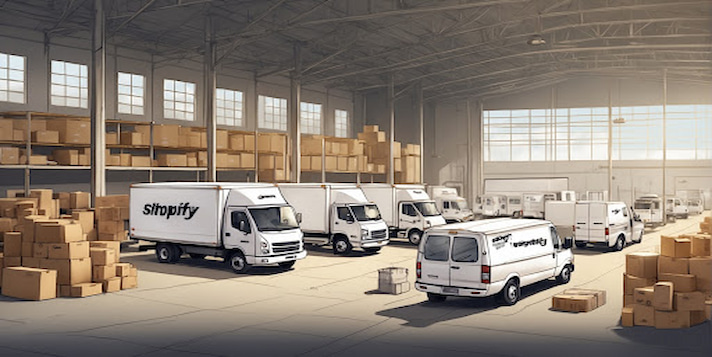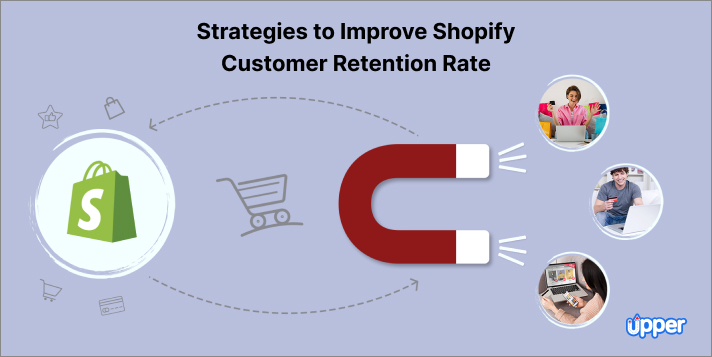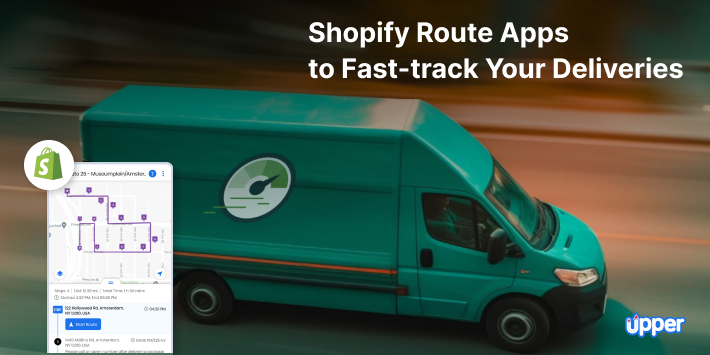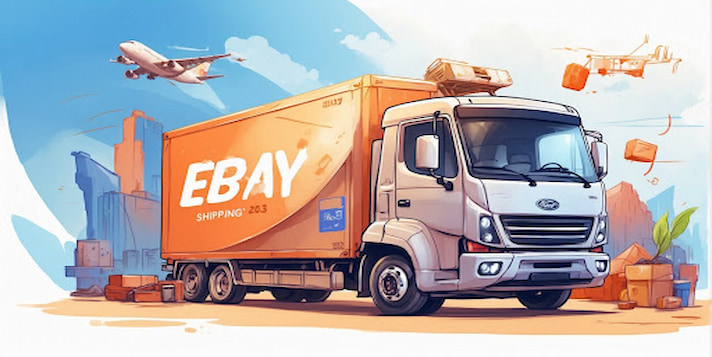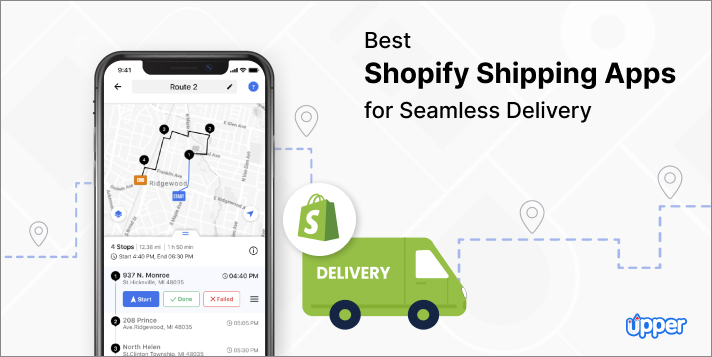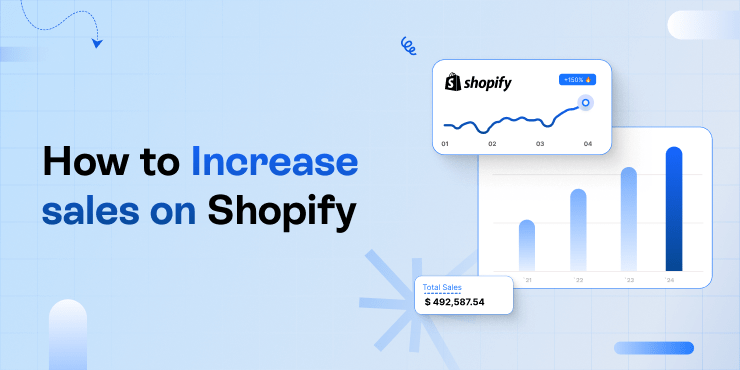 Key Takeaways:
Key Takeaways:
- Understanding Shopify’s delivery process is essential for enhancing order fulfillment and customer satisfaction.
- Managing the delivery process manually can be complex and time-consuming, posing significant challenges for businesses.
- Leveraging technology solutions like Upper can automate and simplify delivery processes.
Welcome to the world of Shopify! If you’re an entrepreneur or a business owner, chances are you’ve heard about this powerful e-commerce platform. But have you ever wondered, “How does Shopify delivery work?”
Well, we’ve got your back! This guide is designed to demystify the complexities of Shopify’s delivery system. We’ll break down everything from order processing and shipping eligibility to carrier selection and cost calculations. Our aim? To provide a clear, beginner-friendly explanation that will help you streamline your order fulfillment process.
So let’s get started! Up next: “What is Shopify Shipping?” – A comprehensive look into how this integral part of the platform functions. By understanding its ins and outs, you can ensure efficient and reliable deliveries for your customers.
Forget Spaghetti Routes, Optimize Routes for Your Entire Team with Upper
Start a 7-Day Free Trial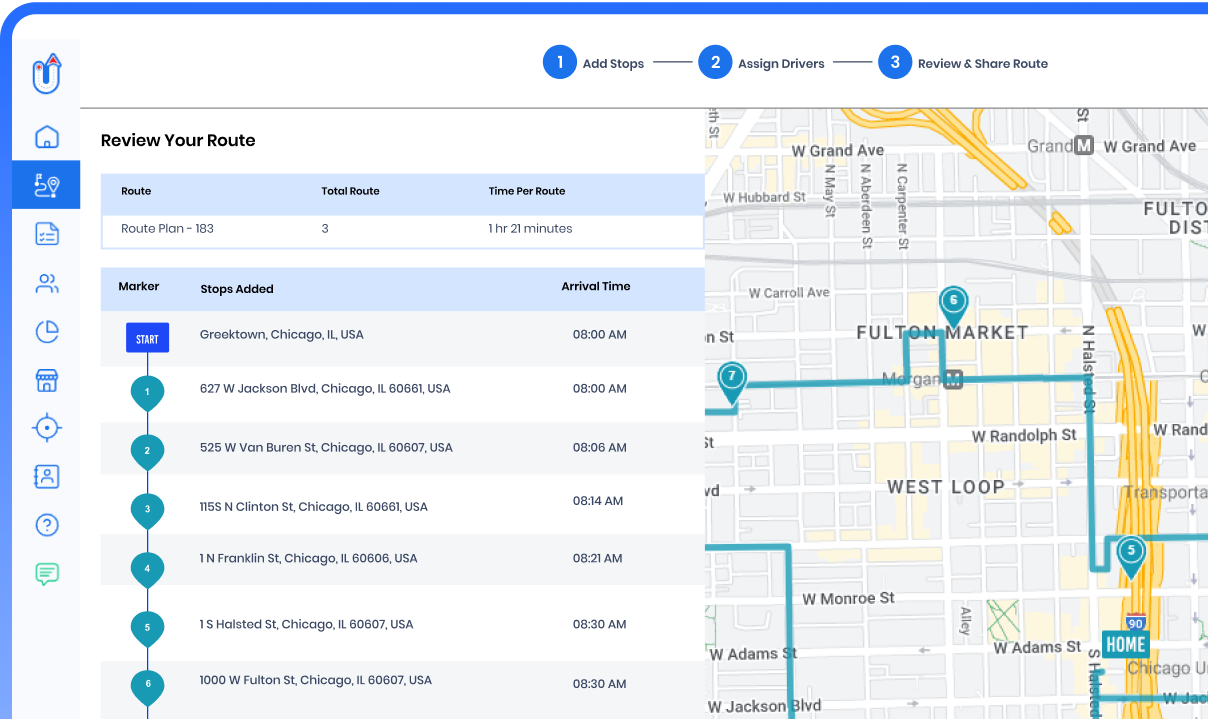
Table of Content
- What is Shopify Shipping?
- How Does Shopify Shipping Work?
- What are the Pros and Cons of Using Shopify Shipping?
- How to Set Up Shopify Shipping?
- Understanding Different Types of Rates on Shopify
- How Does Self-Delivery Work with Shopify?
- When might Self-Delivery be a Good Choice for Businesses?
- What Third-party Apps can be Used for Delivery in Conjunction with Shopify?
- How Does International Shipping Work with Shopify?
- What are Some Common Issues with Shopify Delivery and How to Resolve Them?
- Conclusion
What is Shopify Shipping?

Shopify Shipping is a built-in feature of the Shopify platform that simplifies the process of managing and fulfilling orders for online businesses. It’s like having your own personal shipping department right at your fingertips! With this tool, you can easily calculate real-time shipping rates, print labels, and track packages all from within your Shopify dashboard.
This feature plays a crucial role in order fulfillment as it streamlines the entire delivery process. From receiving an order to getting it out the door and into your customer’s hands, Shopify Shipping helps you every step of the way. It takes care of everything from calculating postage costs based on weight and destination to generating shipping labels with just a few clicks.
Currently, Shopify Shipping is available in three countries: United States, Canada, and Australia. This means that if you’re running an e-commerce business in any of these locations, you can take advantage of this powerful tool to make your shipping operations more efficient.
How Does Shopify Shipping Work?
The magic behind how Shopify Shipping works lies in its ability to compare rates from different carriers such as USPS (United States Postal Service), UPS (United Parcel Service), DHL Express, and Canada Post and Sendle. Once you enter the details about your package – like its weight and dimensions – along with where it needs to go, Shopify will automatically generate a list of carrier options with their respective prices for you to choose from.
After selecting a carrier based on cost or speed preference (or both!), printing shipping labels becomes a breeze! You don’t need any special equipment; just a regular printer will do. Once printed, these labels contain all necessary information, including the sender’s address, recipient’s address, and tracking number, which makes them ready for dispatch.
Tracking shipments through the platform is another key feature that adds value to using Shopify Shipping. As soon as an order leaves your store premises or warehouse facility towards its destination point—be it local or international—Shopify provides real-time updates on its journey. This not only gives you peace of mind but also allows your customers to know exactly when they can expect their purchase to arrive.
With all these features combined, Shopify Shipping simplifies the complex world of e-commerce delivery and makes it accessible even for beginners. It’s a comprehensive solution that takes care of every aspect of shipping so that you can focus more on growing your business.
As we move forward, let’s consider some advantages and disadvantages associated with using Shopify Shipping. Understanding these pros and cons will help you make an informed decision about whether this tool is the right fit for your business.
What are the Pros and Cons of Using Shopify Shipping?
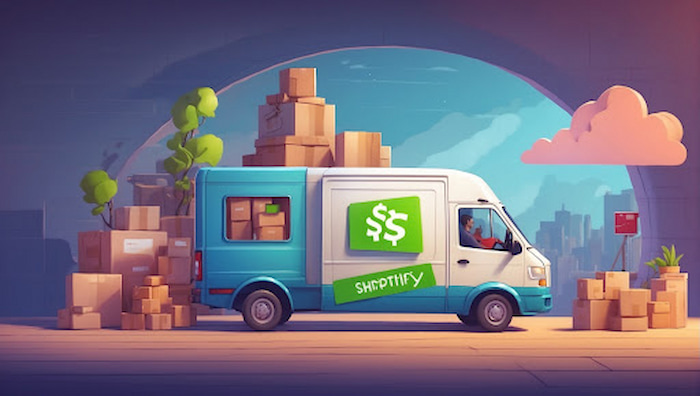
When it comes to e-commerce, shipping is a vital cog in the wheel. It’s the bridge that connects your products with your customers, and having an efficient system in place can make or break your business. One such solution is Shopify Shipping services, which has its own set of advantages and disadvantages.
Advantages of using Shopify Shipping
- Bundled with subscription: Shopify Shipping comes bundled with a standard subscription, making it an accessible option for businesses on the platform. This means you don’t have to worry about additional costs or third-party integrations – everything you need is right there at your fingertips.
Discounted rates: Another major advantage is the discounted rates from partnered carriers like UPS, DHL Express, and USPS. These discounts can be significant – sometimes up to 88% off retail prices! This not only reduces your overheads but also allows you to pass on savings to your customers, enhancing their shopping experience.
Live rates at checkout: Furthermore, Shopify Shipping enables you to show live rates at checkout. This feature provides transparency for customers by allowing them to see exactly how much they’ll pay for shipping before finalizing their purchase. It eliminates any unpleasant surprises when it comes time to check out and helps build trust between you and your customer base.
Disadvantages of using Shopify Shipping
Despite its many benefits, Shopify Shipping does have some limitations that may affect certain businesses more than others:
- Limited support: For instance, it only supports orders originating from specific countries – namely the United States, Canada, and Australia.
- Lack of FedEx integration: The lack of FedEx integration might also be a drawback for some businesses, as FedEx offers a wide range of services that cater to various shipping needs. If FedEx is crucial for your operations or if it’s a preferred carrier among your customer base, then this limitation could pose challenges.
- Missing advanced features: Finally, while Shopify Shipping does offer some automation features, such as automatically updating tracking numbers in order confirmation emails, other aspects like advanced route planning or delivery scheduling are missing. This might not be an issue for smaller businesses, but as your operation grows and becomes more complex, you may find yourself needing a more robust solution.
In conclusion (without using the word), Shopify Shipping is a solid choice for many businesses due to its ease of use and cost-saving benefits. However, it’s important to consider the limitations and evaluate whether they could impact your specific business model or customer base.
How to Set Up Shopify Shipping?
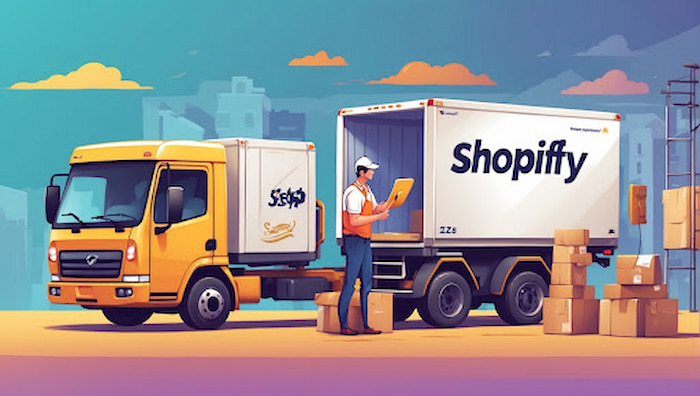
Setting up Shopify shipping is a straightforward process that can be completed in just a few steps. Firstly, you need to navigate to your Shopify admin panel and click on the ‘Settings’ option. From there, select ‘Shipping and Delivery‘. This will open up the shipping settings page, where you can start configuring your preferences.
The first thing you’ll notice is the ‘General Shipping Rates’ section. Here, you can add or edit your shipping zones and rates. A zone could be a specific country, region, or even worldwide coverage. You’ll need to specify which areas you’re willing to ship to and then set up appropriate rates for each zone.
Next comes adding weight and dimensions for accurate rate calculation. This step is crucial as it helps determine the cost of shipping based on package size and weight. To do this, go back to your product listings in the admin panel, select a product, and fill in the ‘Weight’ field under ‘Shipping’. Don’t forget about dimensions too! Enter length, width, and height measurements accurately, as these factors also influence shipping costs.
Once all these details are filled out correctly, Shopify’s built-in calculator will automatically generate precise shipping rates for customers at checkout. It’s important that these figures are accurate – if they’re too high, customers might abandon their carts; too low could mean losses on your end!
Understanding Different Types of Rates on Shopify
Shopify offers two types of rates: calculated rates and manual rates:
- Calculated rates: Calculated rates are automatically generated by carriers like UPS or FedEx based on package details (weight & dimensions) plus destination address provided by customers at checkout.
- Manual rates: On the other hand, manual rates allow store owners more control over their pricing strategy – they can set flat fees or tiered pricing structures depending on order value/weight etc., irrespective of carrier charges.
Setting up calculated rates within Shopify’s system involves linking your store with a carrier’s account. Once this is done, real-time rates from the carrier will be displayed during checkout. This option provides transparency and can help build trust with customers, as they know they’re not being overcharged for shipping.
Setting up manual rates, however, requires more thought and strategy. You’ll need to consider factors like packaging costs, handling fees, and potential profit margins while deciding on these rates. Manual rates can be set per shipping zone or even per product – giving you flexibility in how you price your deliveries.
The choice between calculated and manual rates depends largely on your business model and customer expectations. Some businesses prefer the predictability of manual rates, while others find that calculated ones offer better accuracy and fairness.
In conclusion, understanding Shopify’s delivery process is essential for efficient order fulfillment. By setting up accurate shipping details and choosing the right rate type for your business, you can streamline operations and improve customer satisfaction.
How Does Self-Delivery Work with Shopify?

Self-delivery with Shopify is a viable option for businesses that prefer to handle their deliveries in-house. This method allows you to manage your delivery process from start to finish, giving you full control over every aspect of the journey. It’s an excellent choice for businesses that have a local customer base or those who want to maintain direct contact with their customers throughout the delivery process.
When using self-delivery, you’re responsible for picking, packing, and delivering orders directly to your customers. You’ll need to set up shipping zones and rates within your Shopify store settings, which can be customized based on weight, price, or location. For instance, if 70% of your customers are located within a specific area, you could offer free or discounted delivery rates as an incentive.
The beauty of self-delivery lies in its flexibility:
- Flexible delivery schedule: You can choose when and how often you deliver products depending on what works best for your business operations and customer needs.
- Personalized service: For example, some businesses may opt for same-day delivery if they operate within a small geographical radius, while others might schedule weekly deliveries for larger areas.
However, it’s important to note that managing self-delivery requires significant time and resources. From coordinating drivers’ schedules to ensuring packages arrive safely and on time – it’s all in your hands! But don’t fret; there are tools available, like Upper, that can help streamline this process by optimizing routes and providing real-time tracking links.
When might Self-Delivery be a Good Choice for Businesses?
Choosing self-delivery as a fulfillment method largely depends on the nature of your business and customer expectations:
- Small local business: If you run a small operation serving local clientele – say a bakery or boutique – then self-delivery could be an ideal choice as it allows you to provide personalized service while keeping costs low.
- Perishable goods: For businesses selling perishable goods such as food items or flowers where timely delivery is crucial, self-delivery ensures that products reach customers in optimal condition.
- High-value or fragile items: Self-delivery can also be beneficial for businesses offering high-value or fragile items. By handling the delivery process yourself, you minimize the risk of damage during transit and ensure secure delivery.
In conclusion, while self-delivery might require more hands-on management compared to other fulfillment methods, it can offer significant benefits in terms of cost savings and customer service when implemented effectively.
What Third-party Apps can be Used for Delivery in Conjunction with Shopify?
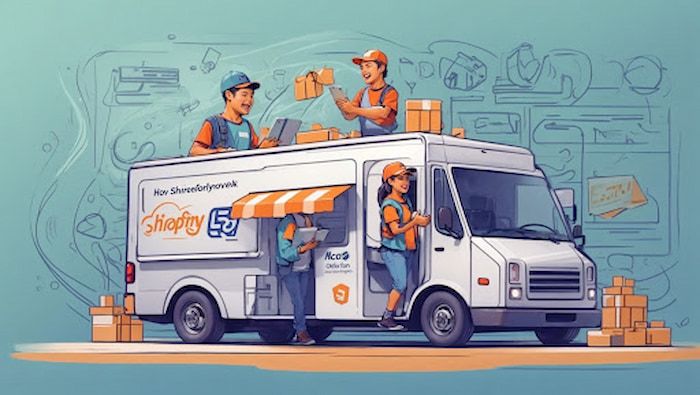
When it comes to enhancing your Shopify store’s delivery process, there are several third-party apps that can make a world of difference. One such app is Veeqo. This powerful tool integrates seamlessly with your Shopify store and allows you to manage orders, inventory, shipping, and accounting all in one place. It’s like having a virtual assistant who never sleeps! Veeqo also supports multi-channel selling, so if you’re selling on Amazon or eBay in addition to Shopify, this app has got you covered.
Another noteworthy Shopify local delivery optimization app is our very own Upper. Designed specifically for Shopify stores, Upper offers an array of features designed to streamline your delivery process. From planning and scheduling routes to syncing order status updates and collecting proof of delivery – Upper does it all. The user-friendly interface makes it easy, even for beginners, to navigate the system and optimize their order fulfillment process.
Third-party apps like these offer more than just convenience; they bring a host of benefits that can significantly enhance your business operations:
- Reduced human error: For instance, using an app like Veeqo or Upper can help reduce human error in order processing by automating various tasks such as order syncing and route planning.
- Valuable business insights: Moreover, these apps provide valuable insights into your business operations through detailed reports and analytics.
In conclusion, integrating third-party apps into your Shopify store’s delivery process could be a game-changer for your business operations – boosting efficiency while improving the customer experience at the same time!
How Does International Shipping Work with Shopify?
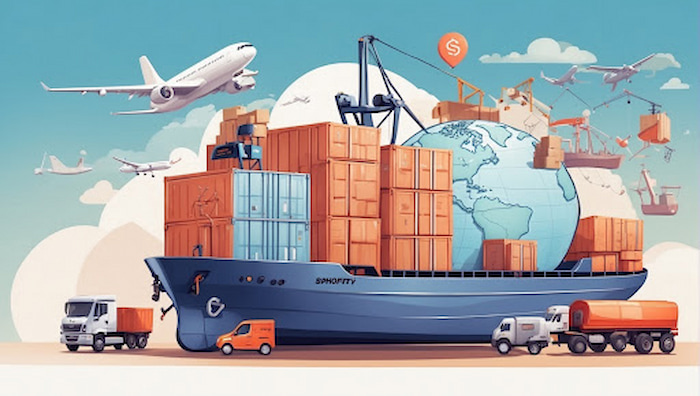
International shipping with Shopify is a straightforward process that enables businesses to reach customers across the globe. Shopify provides an array of options for international shipping, allowing store owners to choose from various carriers and services. This flexibility ensures that businesses can select the most cost-effective and efficient method for their specific needs.
The first step in setting up international shipping on Shopify involves defining your shipping zones. These are the geographical areas where you deliver products. For example, if you’re based in the United States but want to ship worldwide, you would set up different zones for each continent or country you plan to ship to.
Once your zones are established, it’s time to determine your shipping rates. Shopify allows store owners to set either flat-rate shipping or calculated rates based on the weight or price of the items being shipped. Calculated rates can be particularly beneficial as they automatically adjust according to real-time carrier prices, ensuring accuracy and fairness.
When it comes to customs and import taxes, these are typically not included in your Shopify shipping costs. It’s important for businesses to communicate this clearly with their customers so there aren’t any surprises upon delivery. Some online retailers opt to use a service like Duties & Taxes Calculator by Zonos, which integrates with Shopify and provides estimates of any additional fees a customer may need to pay when receiving an international shipment.
Understanding how international shipping works with Shopify is key for businesses looking expand their customer base globally. By leveraging the platform’s flexible features and tools, entrepreneurs can efficiently manage cross-border deliveries while providing a seamless shopping experience for their customers.
What are Some Common Issues with Shopify Delivery and How to Resolve Them?

As a business owner, you might have encountered some common hiccups in the Shopify delivery process. For instance, you may have experienced issues such as incorrect shipping rates or missing shipping options. These problems can be frustrating and time-consuming to resolve, but don’t worry – there are solutions available:
- Incorrect shipping rates: Incorrect shipping rates often occur when the weight or dimensions of your products are not accurately entered into the system. This can lead to overcharging or undercharging for shipping, which can either deter customers from making a purchase or cut into your profits.
- Missing shipping options: Missing shipping options is another common issue that many Shopify store owners face. This usually happens when certain shipping methods aren’t enabled in your store settings, preventing customers from choosing their preferred delivery method at checkout.
- Delayed deliveries: Another prevalent problem is delayed deliveries due to inefficient route planning. This can lead to customer dissatisfaction and negative reviews for your store.
In conclusion, while these issues may seem daunting at first glance, they’re quite manageable with the right knowledge and tools at hand.
Conclusion
As we’ve journeyed through the intricacies of Shopify’s delivery process, it’s clear that understanding how it works is vital for any e-commerce business owner. Whether you’re a tech-savvy startup or an established enterprise, mastering this aspect can significantly streamline your order fulfillment and enhance your customer experience.
But let’s face it – managing deliveries can be complex and time-consuming. That’s where Upper comes in. Our user-friendly app integrates seamlessly with Shopify, offering features like route optimization, one-click dispatch reports, real-time tracking links, and 24/7 customer support. Why not take the next step to simplify your delivery management? Sign up for a free trial today or schedule a demo with our team to see how Upper’ e-commerce delivery route optimization software can make your Shopify delivery process more efficient.
